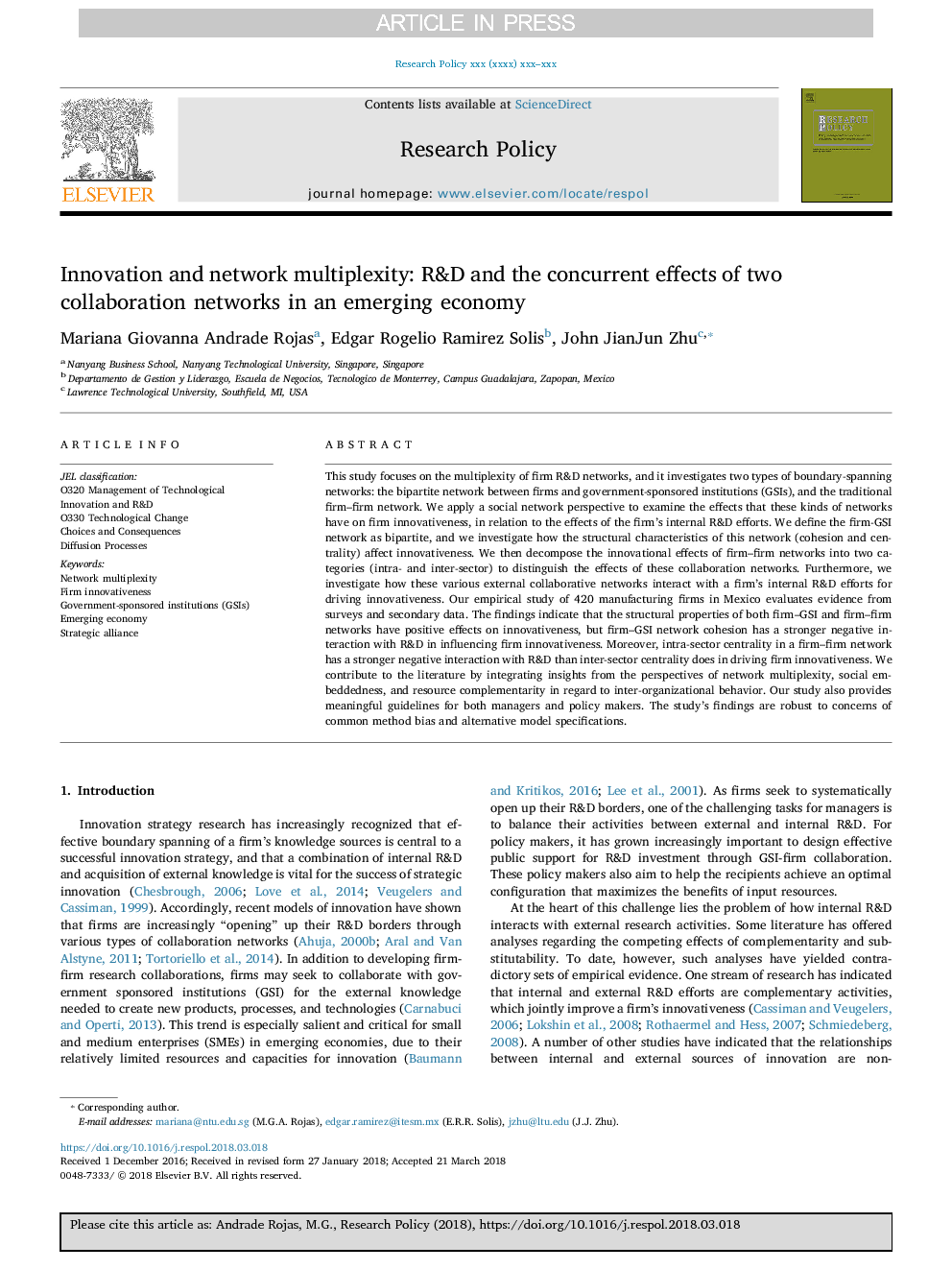ترجمه فارسی عنوان مقاله
نوآوری و پیچیدگی شبکه: تحقیق و توسعه و اثرات همزمان دو شبکه همکاری در یک اقتصاد نوظهور
عنوان انگلیسی
Innovation and network multiplexity: R&D and the concurrent effects of two collaboration networks in an emerging economy
| کد مقاله | سال انتشار | تعداد صفحات مقاله انگلیسی |
|---|---|---|
| 96371 | 2018 | 14 صفحه PDF |
منبع

Publisher : Elsevier - Science Direct (الزویر - ساینس دایرکت)
Journal : Research Policy, Available online 7 April 2018

